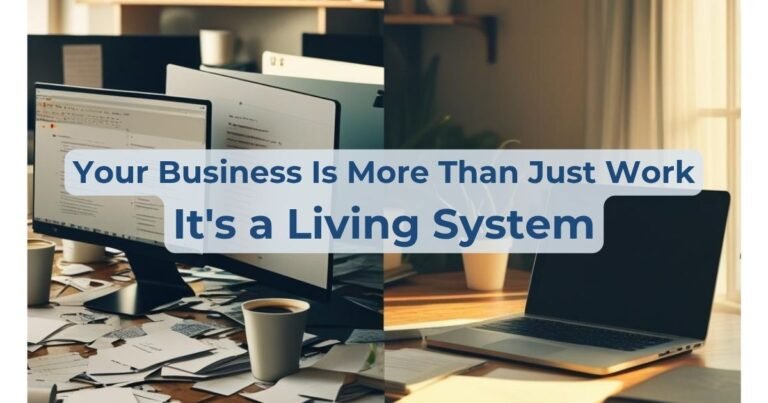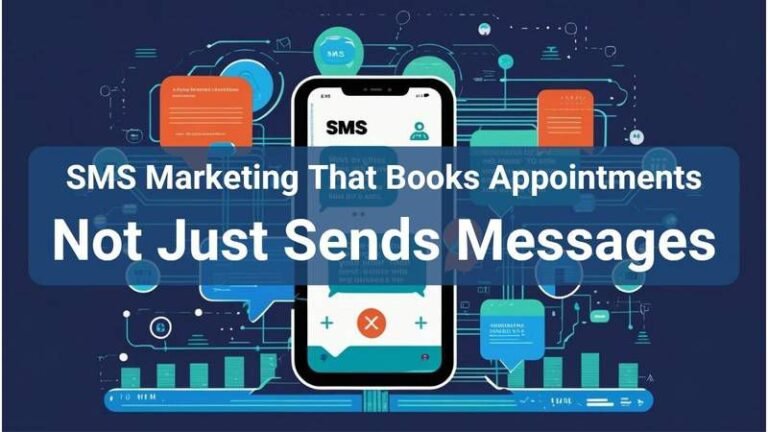
Level Up Your Local Game: A Small Business Owner’s Guide to Dominating Local SEO
Introduction:
In today’s digital age, local SEO is no longer optional—it’s essential for small businesses aiming to thrive. Think about it: when someone searches for “best pizza near me” or “plumber in [your city],” are you showing up? Local SEO is the strategy that gets you seen by these high-intent customers, driving foot traffic and boosting your bottom line.
This is where I, Sid, come in. With 22 years of experience in helping over 200 businesses succeed online, and as the owner of BluezInnovations.com, BluezGlobal.com, BluezGlobal.Online, and TryBluez.Shop, I’ve seen firsthand the transformative power of effective local SEO.
This blog post will serve as your roadmap to mastering local SEO. We’ll cover everything from foundational keyword research to advanced optimization techniques, empowering you to take control of your local search rankings and achieve sustainable growth.
1. Understanding the Local SEO Landscape
While traditional SEO focuses on broader online visibility, local SEO zeroes in on attracting customers within a specific geographic area. It’s about optimizing your online presence so you appear prominently when local consumers search for businesses like yours. Google employs a distinct set of ranking factors for local searches, with the following carrying the most weight:
- Relevance: This refers to how well your business aligns with what the searcher is looking for. To rank high, ensure your business provides the services, products, or information the searcher seeks.
- Proximity: In local searches, the closer your business is to the searcher’s location, the better. Google considers the user’s current location or the location they specify in their search.
- Prominence: This is how well-known and trusted your business is, both online and offline. It encompasses factors like reviews, citations (online mentions of your business name, address, and phone number), website authority, and brand recognition.
Understanding these local-specific ranking factors is crucial for developing a targeted and effective local SEO strategy that drives customers to your doorstep.
2. Keyword Research: Your Foundation for Success
Keywords are the words and phrases your potential customers use when searching for businesses like yours online. They act as the bridge connecting searchers with your business. Therefore, effective keyword research is the cornerstone of any successful SEO strategy, especially when targeting local audiences.
Here’s a breakdown of keyword research tools, with recommendations:
| Tool Category | Tool Name | Description | Recommendation |
|---|---|---|---|
| Free Tools | Google Keyword Planner | Provides keyword ideas and search volume data. | Good starting point for understanding potential keywords and informing initial content strategy. |
| Google Trends | Explores trending topics and keywords in your area. | Useful for identifying timely and relevant content opportunities. | |
| Paid Tools | Moz Keyword Explorer | Offers in-depth keyword analysis. | Best suited for users with some SEO expertise or agencies. |
| Ahrefs Keywords Explorer | Provides extensive keyword data. | Best suited for users with some SEO expertise or agencies. | |
| Semrush | Comprehensive SEO platform. | Best suited for users with some SEO expertise or agencies. |
While paid tools offer advanced features, they come at a higher cost and are often better suited for users with SEO expertise or agencies. However, remember that relying solely on these tools doesn’t guarantee ranking success. Creating valuable, user-focused content and tracking its performance is crucial. Tools like Google Search Console and MonsterInsights can help you understand how your content performs, what keywords drive traffic, and where to improve. This data should inform your ongoing strategy and refine your approach beyond just targeting specific keywords.
Types of Local Keywords: A Quick Guide
To effectively target local customers, it’s important to understand the different types of keywords they use:
- Location + Service: These keywords combine a specific service or product with a location, such as “plumber in Houston” or “hair salon in Chicago.” They clearly indicate a user’s need for that service in that area.
- “Near Me” Searches: With the rise of mobile search, “”near me”” keywords have become increasingly important. Examples include “”coffee shops near me,”” “”restaurants near me,”” and “”hotels near me.”” These searches demonstrate a very high purchase intent, as the user is looking for immediate results.
- Product/Service + Location: These keywords focus on a specific product or service offered in a particular location, like “used cars Dallas” or “pizza delivery New York.” They help users find specific products or services within a certain area.
- Long-Tail Keywords: These are longer, more specific phrases that indicate a highly focused search intent. For example, “best Italian restaurant with outdoor seating Austin” or “affordable family dentist in San Diego.” Long-tail keywords often have lower search volume but higher conversion rates, as they target users with very specific needs.
Local Keyword Research Best Practices:
Here are some key best practices to keep in mind when conducting keyword research for your local business:
- Start with your core offerings: Begin by listing the primary services or products your business provides. This will form the foundation of your keyword research.
- Empathize with your customers: Put yourself in your customers’ shoes and brainstorm the terms they would use to find your business. Consider their needs, pain points, and the language they use in their searches.
- Diversify your keyword strategy: Incorporate a mix of broad, phrase, and long-tail keywords to capture users at different stages of the buying process and with varying search intent.
- Analyze your competition: Identify your main competitors and analyze the keywords they are ranking for. This can provide valuable insights and help you uncover new keyword opportunities.
- Prioritize local intent: Focus on keywords that demonstrate a clear local search intent. These are the keywords that indicate the searcher is looking for a business or service in a specific location.
- Organize for success: Group your keywords into logical groups based on service, location, or customer intent. This will help you structure your website content and create targeted landing pages that are optimized for specific search queries.
3. Optimizing Your Google Business Profile (GBP)
Your Google Business Profile is arguably the most critical element of your local SEO strategy. It’s what appears in Google’s Local Pack and Maps results.
Key GBP Optimization Steps:
- Claim and verify your listing: Ensure you have ownership of your GBP profile.
- Complete every section: Provide accurate and detailed information about your business, including:
- Name, Address, Phone number (NAP) – Ensure consistency across all platforms.
- Business hours
- Categories (primary and secondary)
- Services/products
- Website URL
- Attributes (e.g., “Wheelchair accessible,” “Free Wi-Fi”)
- Use high-quality photos: Showcase your business, products, and team.
- Write a compelling business description: Use relevant keywords and highlight what makes your business unique.
- Encourage and respond to reviews: More on this in section 6.
- Post regularly: Share updates, promotions, and events to keep your profile fresh.
- Use Google Posts: Promote special offers, events, and announcements.
- Enable messaging: Allow customers to contact you directly from your GBP profile.
4. On-Page Optimization: Making Your Website a Local SEO Powerhouse
Your website is a crucial piece of the local SEO puzzle. Think of it as your business’s online storefront, the place where potential customers learn more about you and decide whether to take the next step. Optimizing your website for local search helps search engines understand your relevance to local customers, ultimately boosting your visibility in local search results.
As a website development expert with BluezInnovations.com, I understand the importance of a well-optimized website. If you’re looking to create a website that not only looks great but also drives local traffic and conversions, I invite you to book a free consultation with my team. We can discuss your specific needs and create a tailored strategy to help you achieve your business goals.
Here are the key on-page optimization best practices to implement:
- NAP Consistency: Ensure your business name, address, and phone number (NAP) are displayed consistently across your website, and that it exactly matches your GBP listing. This seems basic, but it’s critical!
- Location in Title Tags and Meta Descriptions: Include your city and state in the title tags and meta descriptions of your relevant website pages. This helps search engines and users quickly understand the local relevance of your content.
- Strategic Header Tags: Use header tags (H1, H2, H3, etc.) to structure your content in a clear, logical way, and incorporate relevant keywords. This improves both readability and SEO.
- Local Content Development: Create dedicated pages for your service areas or neighbourhoods. This allows you to target specific local keywords and provide tailored information to potential customers in those areas.
- Schema Markup Implementation: Implement structured data markup (schema) to help search engines better understand your business information, such as NAP, hours, reviews, and more. This can enhance your website’s visibility in search results.
- Image Optimization for Local SEO: Optimize your images by using descriptive file names and alt text that include location-based keywords. This helps search engines understand the context of your images and can improve your website’s overall SEO.
- Mobile-Friendly Design and User Experience: In today’s mobile-first world, your website must be responsive and provide a seamless experience on all devices. A mobile-friendly design is not only a ranking factor but also crucial for user satisfaction.
- Website Speed Optimization: A fast-loading website improves user experience and SEO. Optimize your website’s loading speed by compressing images, leveraging browser caching, and minimizing code.
5. Building a Strong Local Citation Profile
Local citations are crucial for establishing your business’s online presence and trustworthiness. They are essentially online mentions of your business’s Name, Address, and Phone number (NAP). Think of them as digital breadcrumbs that help search engines like Google verify your business’s legitimacy and relevance within a specific geographic area. A strong citation profile signals to Google that your business is well-established and trusted, which can significantly boost your local search rankings.
Here’s a breakdown of the key aspects of local citations:
Types of Local Citations:
Local citations can appear on various online platforms, including:
- Business directories: These are websites that list businesses within specific categories or locations. Popular examples include Yelp, Yellow Pages, and Bing Places.
- Industry-specific directories: These directories cater to specific industries, such as Avvo for lawyers or Zocdoc for doctors.
- Chamber of Commerce listings: Many local Chambers of Commerce have online directories of their members.
- Data aggregators: These are companies that collect and distribute business information to various online platforms. Major data aggregators include Data Axle and Localeze.
- Social media platforms: Platforms like Facebook and Twitter can also serve as local citations, especially if your NAP is prominently displayed on your business pages.
Local Citation Building Best Practices:
To build a strong local citation profile, follow these best practices:
- NAP Consistency is Key: This is the golden rule of citation building. Ensure your business name, address, and phone number are displayed the same across all platforms. Even minor variations can confuse search engines and hinder your local SEO efforts.
- Prioritize Quality Over Quantity: Focus on getting listed on reputable and relevant directories, rather than trying to be listed on every directory imaginable. A few high-quality citations are more valuable than many low-quality ones.
- Claim and Optimize Existing Citations: Search for existing citations of your business online and ensure they are accurate and complete. Update any inaccurate or incomplete listings with your correct NAP information.
- Regularly Monitor Your Citations: Inaccuracies can creep in over time, so it’s essential to monitor your citations regularly. Use tools or manual searches to check for inconsistencies and correct them promptly.
- Consider Using a Citation Management Tool: For businesses with numerous locations or those seeking to streamline the citation-building process, citation management tools like BrightLocal or Yext can be valuable. These tools can help automate citation creation, optimization, and monitoring.
6. The Power of Online Reviews
Online reviews have become an integral part of the local search landscape. They not only influence search engine rankings but also play a significant role in shaping customer behaviour and purchase decisions. Studies show that a vast majority of consumers read online reviews before choosing a local business.
Here’s why online reviews are so important:
- Impact on Local SEO: Search engines like Google consider online reviews as a key ranking factor for local businesses. Businesses with a higher number of positive reviews tend to rank higher in local search results.
- Influence on Customer Decisions: Online reviews provide social proof and build trust with potential customers. Positive reviews can significantly increase the likelihood of someone choosing your business, while negative reviews can deter them.
Key Review Statistics:
- 93% of consumers read online reviews before making a purchase.
- Businesses with more positive reviews tend to rank higher in local search results.
Review Management Best Practices:
To leverage the power of online reviews, it’s essential to have a proactive review management strategy. Here are some best practices to follow:
- Encourage Reviews from Satisfied Customers: Don’t be afraid to ask your happy customers to leave reviews on Google, Yelp, and other relevant platforms. You can do this through in-person requests, email follow-ups, or by including a link in your receipts.
- Make it Easy for Customers to Leave Reviews: Provide direct links to your review profiles on your website, social media pages, and email communications. The easier it is for customers to leave a review, the more likely they are to do so.
- Respond to All Reviews promptly: Whether the review is positive or negative, it’s crucial to respond promptly and professionally. Thank positive reviewers for their feedback and address negative reviews with empathy and a willingness to resolve any issues.
- Monitor Your Reviews Across Different Platforms: Keep track of your reviews on all the major platforms where your business is listed. This will allow you to stay on top of your online reputation and respond to reviews on time.
- Highlight Positive Reviews on Your Website and Social Media: Showcase the best reviews on your website and social media channels to build trust and credibility with potential customers. You can use testimonials, quotes, or star ratings to highlight your positive feedback.
7. Content Marketing for Local SEO
Content marketing is a powerful strategy for attracting local customers and improving your search engine rankings. By creating valuable, locally relevant content, you can establish your business as a trusted resource in your community and attract a steady stream of targeted traffic to your website.
Content Ideas for Local SEO:
Here are some content ideas that can help you attract local customers:
- Blog posts about local events, news, or attractions: Write about upcoming events in your area, local news stories, or popular attractions. This type of content can attract local readers who are looking for things to do in their community.
- Guides to your city or neighbourhood: Create comprehensive guides to your city or neighbourhood, highlighting the best places to eat, shop, and visit. This can position your business as a local expert and attract customers who are new to the area.
- Customer success stories with a local focus: Share stories about how your business has helped local customers solve their problems or achieve their goals. This can build trust and credibility with potential customers in your area.
- Interviews with local experts or business owners: Interview other local experts or business owners in your industry. This can expose your business to a new audience and establish you as a thought leader in your community.
- Videos showcasing your business or location: Create videos that showcase your business, your products or services, or your location. Videos can be a highly engaging way to attract local customers and improve your search engine rankings.
- Local partnerships and sponsorships: Partner with other local businesses or sponsor local events. This can help you reach a wider audience and build relationships with other members of the community.
Content Optimization for Local SEO:
To maximize the impact of your content marketing efforts, it’s essential to optimize your content for local SEO. Here are some key optimization strategies:
- Use local keywords naturally: Incorporate location-based keywords into your content in a natural and organic way. Avoid keyword stuffing, as this can harm your search engine rankings.
- Create location-specific pages: Develop pages on your website that are dedicated to specific service areas or neighbourhoods. This allows you to target local keywords and provide tailored information to potential customers in those areas.
- Promote your content across multiple channels: Share your content on social media, email, and other channels to reach a wider audience. The more people who see your content, the more likely it is to attract local customers.
- Engage with local influencers and communities: Partner with local bloggers, social media influencers, and community organizations to promote your content and reach a wider audience.
8. Mobile Optimization: Catering to On-the-Go Customers
With the rise of mobile search, ensuring your website is mobile-friendly is crucial for local SEO.
Are you too busy running your business to worry about mobile optimization? Check out our digital marketing services here [link to services page] to see how we can help!
Mobile Optimization Best Practices:
- Responsive design: Your website should adapt seamlessly to different screen sizes.
- Fast loading speed: Mobile users expect fast page loads.
- Easy navigation: Make it easy for mobile users to find what they need.
- Click-to-call functionality: Enable users to call your business directly from your website.
- Mobile-friendly content: Ensure your content is easy to read and view on mobile devices.
9. Tracking Your Local SEO Performance
Monitoring your progress is essential for understanding what’s working and what’s not in your local SEO strategy. By tracking the right metrics, you can identify areas of improvement, optimize your efforts, and demonstrate the ROI of your local SEO initiatives.
Here are some key metrics to track:
- Keyword rankings: Track your website’s ranking for your target keywords in local search results. This will help you measure the effectiveness of your keyword optimization efforts.
- Google Business Profile performance: Monitor key metrics in your Google Business Profile, such as views, clicks, and actions (e.g., website visits, phone calls, direction requests). This data provides insights into how users are interacting with your profile.
- Website traffic from local searches: Track the number of visitors coming to your website from local search queries. This will help you understand how well your website is performing in local search results.
- Organic Traffic: Track the visitors coming to your website from search engines like Google, Bing, etc.
- Referral Traffic: Track the visitors coming to your website from other websites.
- Phone calls and leads: Track the number of phone calls and leads generated from your local SEO efforts. This is a crucial metric for measuring the direct impact of your SEO strategy on your bottom line.
- Customer reviews: Monitor the number and quality of your online reviews across different platforms. This will help you gauge your online reputation and identify areas where you can improve customer satisfaction.
Here are some tools that can help you track your local SEO performance:
- Google Analytics: A free tool that provides detailed data about website traffic, user behavior, and conversions. You can use Google Analytics to track how many visitors are coming to your website from local search results and what they are doing on your site.
- Google Search Console: A free tool that helps you monitor your website’s performance in Google Search. You can use Google Search Console to track your keyword rankings, identify any technical issues that may be affecting your SEO, and submit your sitemap to Google.
- Google Business Profile Insights: A free tool within your Google Business Profile that provides data on how users are finding and interacting with your profile. You can use GBP Insights to track metrics like views, clicks, and actions.
- Rank tracking tools: Paid tools like Moz, Ahrefs, and Semrush can help you monitor your keyword rankings over time and across different locations. These tools provide more advanced features and data than Google Search Console.
- Call tracking software: If phone calls are a significant source of leads for your business, consider using call tracking software. This type of software can track which marketing channels are generating the most phone calls, including local SEO.
10. Future of Local SEO: What’s on the Horizon
Local SEO is constantly evolving. Staying ahead of the curve is crucial for maintaining your competitive edge.
Emerging Trends:
- AI and machine learning: Google is increasingly using AI to understand search intent and deliver more relevant local results.
- Voice search: With the rise of voice assistants, optimizing for voice search is becoming more important.
- Personalization: Search results are becoming more personalized based on user location, search history, and preferences.
- Augmented reality (AR): AR is beginning to play a role in local search, allowing customers to visualize businesses and products in their physical environment.
- Zero-click searches: More and more searches are resulting in users getting the information they need directly on the search results page, without clicking on a website.
Conclusion:
Local SEO is a dynamic and multifaceted field, but with the right strategy and consistent effort, small business owners can achieve remarkable results. By implementing the tips and best practices outlined in this guide, you can improve your local search rankings, attract more customers, and drive sustainable growth for your business.
Frequently Asked Questions (FAQs)
Here are some frequently asked questions about the future of local SEO:






